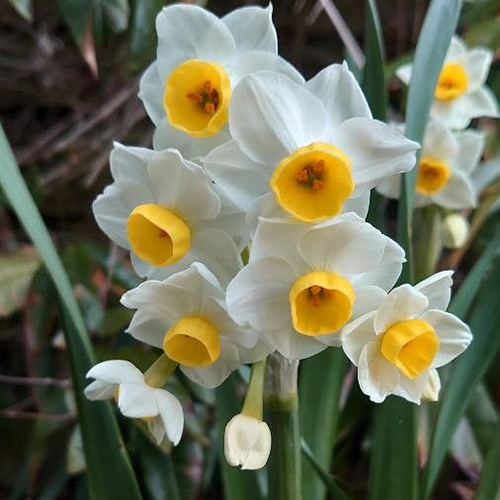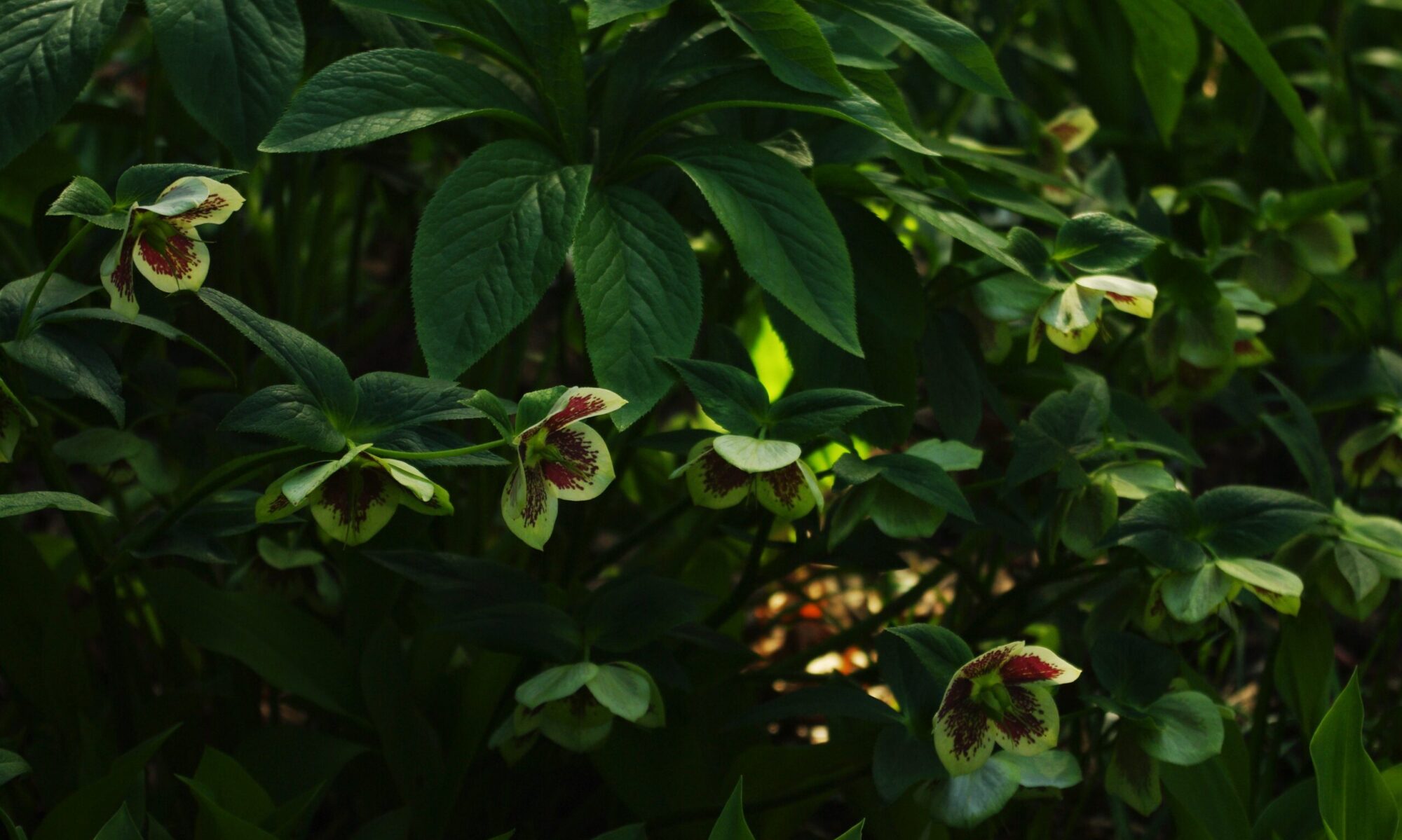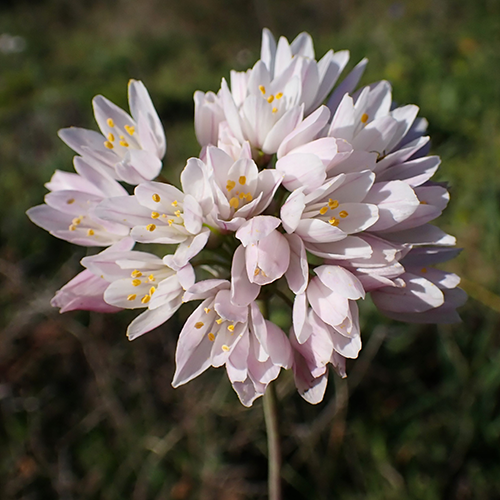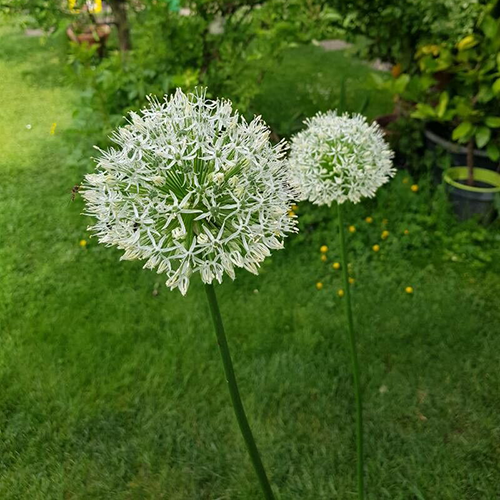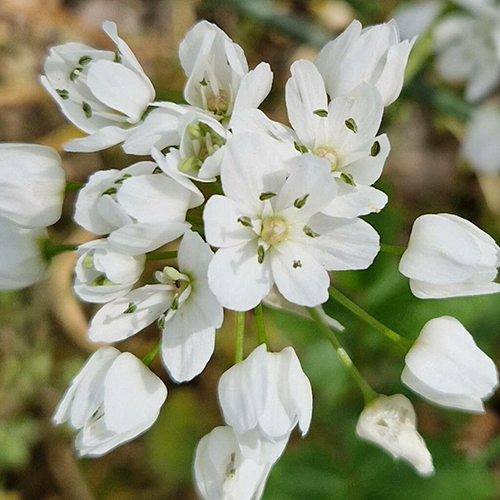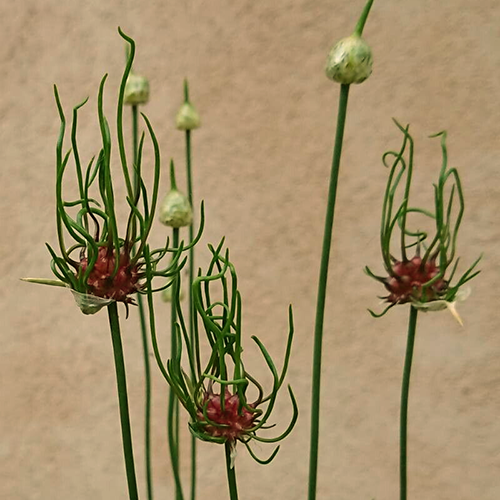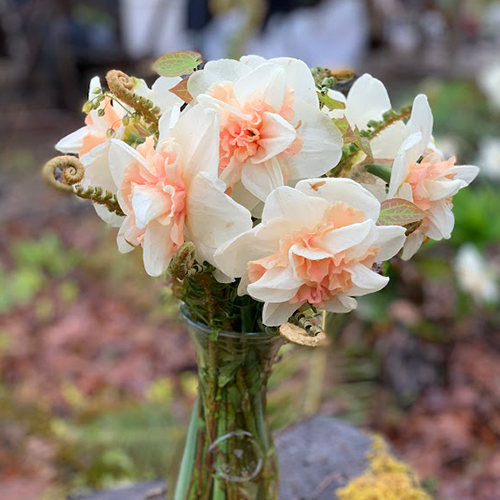
The entire internet and the world of SEO pushes towards making wordy posts that result in a ton of filler and jargon that drives me totally nuts. If you’re looking for the basic details, here they are.
Full/part sun, perennial, well drained soil, hardy to Z4, 18-36″ tall, or 5-12″ if a dwarf species. Naturalizes. Plant 4x the height of the bulb in fall or early spring. Deer resistant, drought tolerant.
Full list of Narcissus varietals we’re carrying this year

It isn’t entirely clear whether the myth came from the flower, or the flower from the myth, but in the end, narcissus is synonymous with a love for beauty and a pride in that beauty. Narcissus flowers certainly strike me as proud – they are some of the earliest bulbs to flower during the spring season, preceded only by crocuses and snowdrops, those tiny promises of winter’s end.
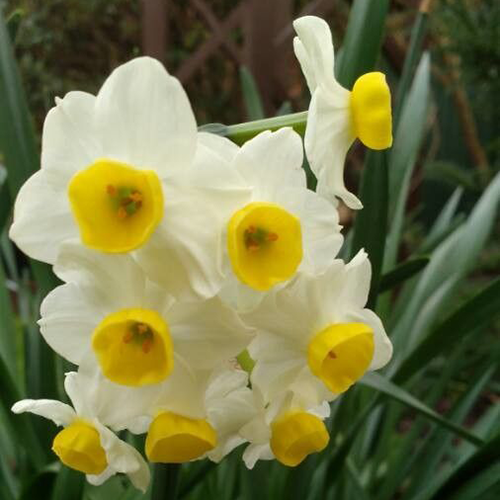
While the most commonly planted Narcissus flowers aren’t fragrant, many varietals within the genus are. Their scent is sweet and powerful, similar to sweet peas with a hint of freshly cut grass thrown in.
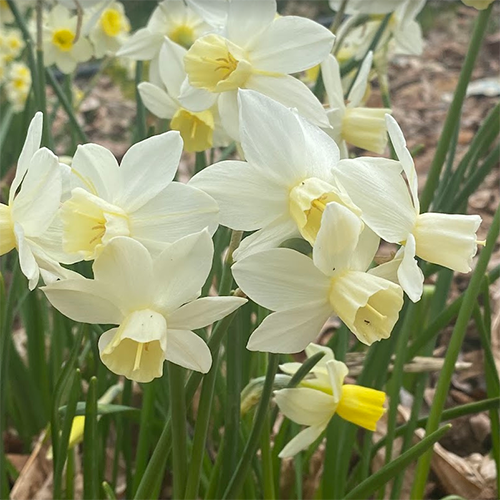
Most Narcissus bloom in early to mid-spring, and range in colour from pure white through butter yellow to a deep golden orange. In our garden, we’ve had fields of Forget-Me-Nots out of which the Narcissus poke their sunny heads. The effect of those cheerful yellow faces rising out of the delicate sea of blue feels like a celebration of the garden’s return to life.
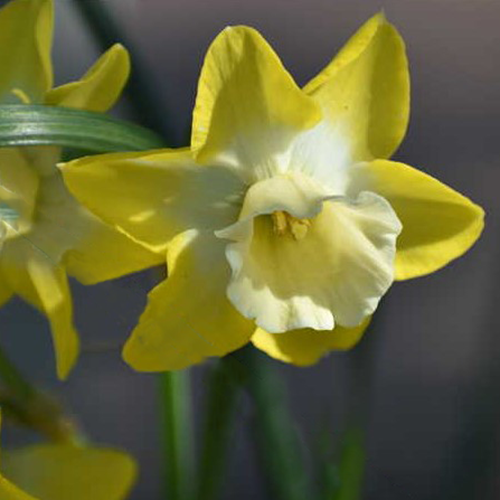
Along with Alliums, the Narcissus genus won’t get touched by deer, as the genus produces alkaloids that are toxic to them. This adaptive mechanism means that they make great border plants – the worst damage you’ll see is a less-than-brilliant deer give a leaf or two a try before it moves on to something that won’t burn its mouth, though they’re commonly enough planted that it’s unusual to encounter a deer who hasn’t already given daffodils a shot and decided against running the experiment again.
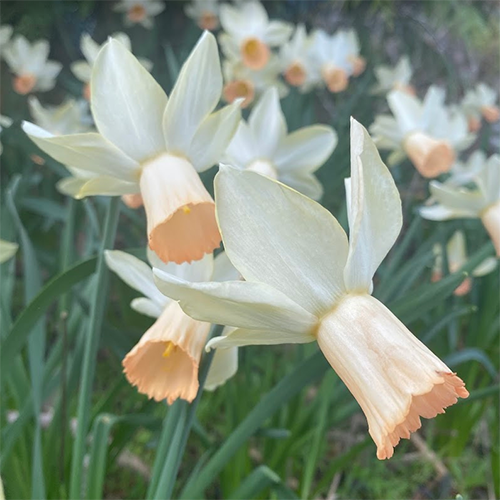
These sunny beauties are most often seen with the traditional single layer of six petals, but there are double and triple varietals, with an effect more similar to a small dahlia. There is also the gorgeous Narcissus Poeticus var. Recurvus, which has recurved creamy white petals surrounding a halo-like gold corona that’s edged with a deep orange.
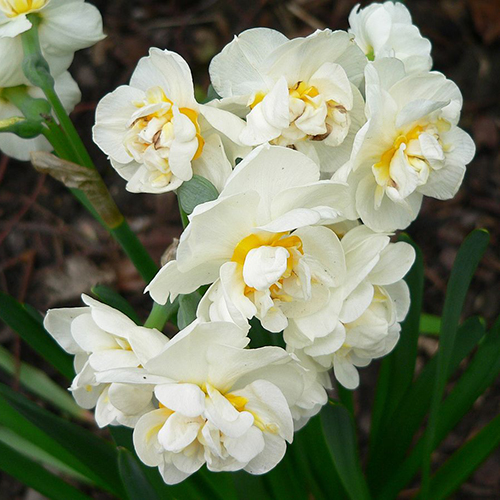
Most Narcissus grow to a height of approximately 18″, but there are dwarf varietals that are well suited to small beds or containers. If you walk around the Butchart Gardens in daffodil season (March – April), you may spot some of the adorable “petticoat type” daffodils planted in containers, which barely clear 5″ before putting out golden bell-shaped flowers – their petals are insignificant but their corona is outsized, resulting in that classic ‘petticoat’ shape.

All of the varieties you see here are ones we’re carrying for the autumn planting season, for which you can place an order (for pickup in Courtenay) here.
See a full list of the Narcissus varietals we carry
If you can’t wait to get your hands on some, you can try making an appointment to come visit us at our home nursery in Courtenay, or place an order online.
Happy Gardening!
